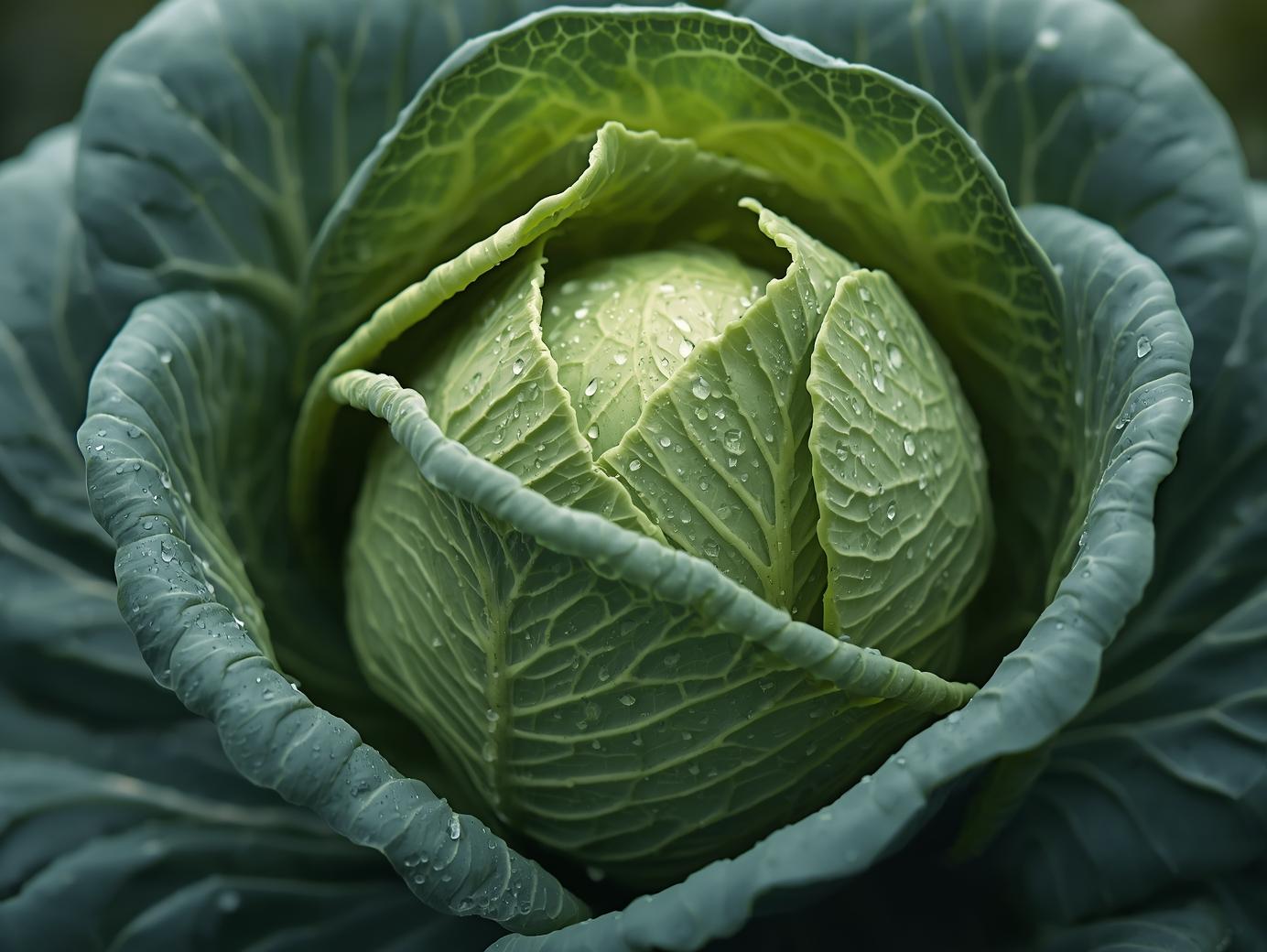Site Preparation
Proper site preparation is essential for growing healthy and productive cabbage roots in your home courtyard. Cabbage thrives best in cool weather and needs a location that receives full sunlight for at least six hours a day. Choose a spot in your courtyard with well-draining soil and good air circulation to prevent fungal diseases. Remove weeds, stones, and plant debris before planting to ensure the young seedlings have enough space and nutrients to grow without competition.
Loosen the soil to a depth of about 12 inches to allow the roots to develop freely. Mixing organic compost or aged manure improves soil structure and fertility, providing a nutrient-rich foundation for cabbage growth. Raised beds or large containers are excellent options for smaller courtyards in urban areas, as they provide better control over soil quality and drainage. Preparing the site thoroughly ensures strong, disease-resistant plants and better-quality heads at harvest time.
Soil Selection
Cabbage root grows best in fertile, well-drained loamy soil with a slightly acidic to neutral pH between 6.0 and 7.5. The soil should be rich in organic matter to support steady nutrient absorption. Heavy clay soil can restrict root development and retain excess water, while sandy soils may drain too quickly, depriving the plant of essential moisture. Mixing compost, peat moss, or well-rotted manure enhances both drainage and nutrient retention.
For courtyard gardeners in the USA, high-quality potting mixes can be used if growing cabbage in containers. It’s important to test the soil before planting to ensure balanced nutrient levels. Adding bone meal or organic matter before planting helps strengthen the roots and encourages better head formation. With the right soil composition, cabbage plants grow strong and produce crisp, firm heads suitable for salads and cooking.
Planting
Cabbage is typically grown from seedlings, which can be started indoors or purchased from a local nursery. For most U.S. regions, early spring or late summer is the ideal time for planting, as cabbage prefers cool temperatures. When transplanting, space the seedlings about 12 to 18 inches apart in rows that are at least 24 inches apart. This spacing ensures enough airflow, reducing the risk of pests and diseases.
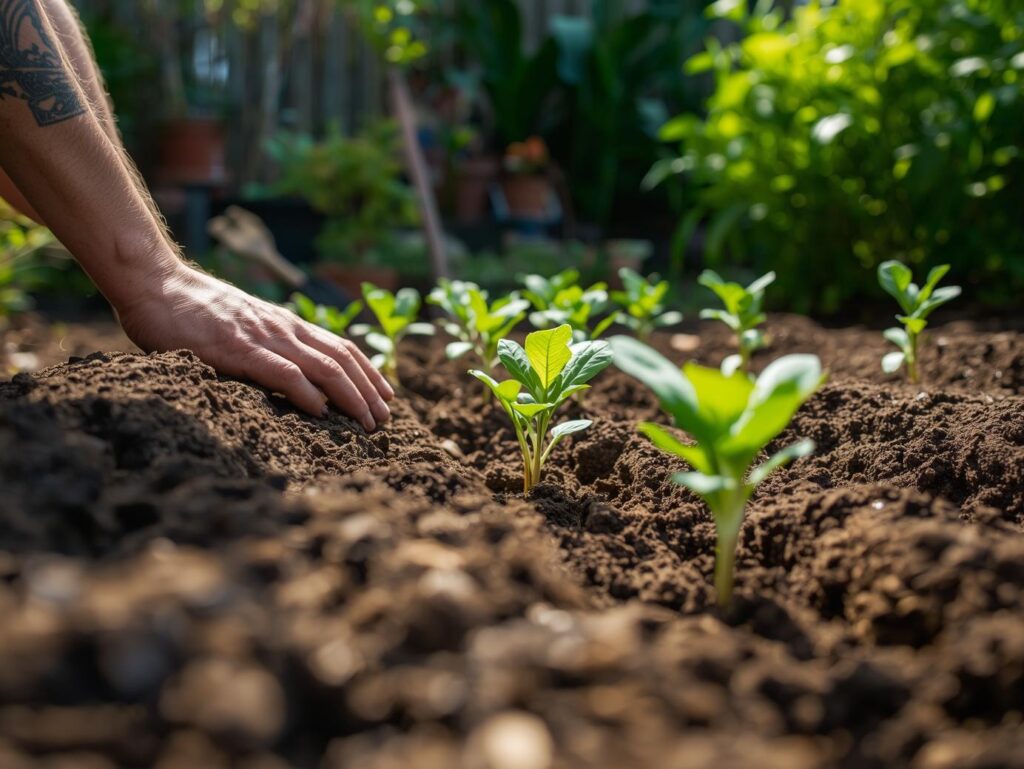
When planting in courtyard containers, use deep pots with good drainage holes to prevent waterlogging. Plant the seedlings slightly deeper than they were in their nursery containers to encourage strong root development. Water immediately after planting to help the soil settle around the roots. Consistent moisture and moderate temperatures during the early stages of growth help the plants establish quickly and prepare for robust head formation.
Watering
Cabbage requires consistent watering to maintain its crisp texture and vibrant color. The soil should remain moist but never waterlogged, as excessive water can lead to root rot. Water deeply two to three times per week, depending on the weather, ensuring that moisture reaches the deeper roots. During hot or dry periods, mulching around the plants helps retain soil moisture and regulate temperature.
Avoid overhead watering, as wet leaves can encourage fungal diseases like mildew or leaf spot. Instead, direct the water to the base of the plant. For courtyard gardens, drip irrigation systems or soaker hoses are highly effective in maintaining even soil moisture. Regular watering throughout the growing season promotes steady growth and ensures the development of firm, compact cabbage heads.
Fertilizing
Cabbage is a heavy feeder and benefits from nutrient-rich soil throughout its growth period. Before planting, enrich the soil with organic compost or a balanced fertilizer that provides nitrogen, phosphorus, and potassium. Once the plants are established, side-dress them with compost or apply a nitrogen-rich fertilizer every three weeks to encourage leafy growth. Avoid over-fertilizing, as excessive nitrogen can delay head formation and make the plants more vulnerable to pests.
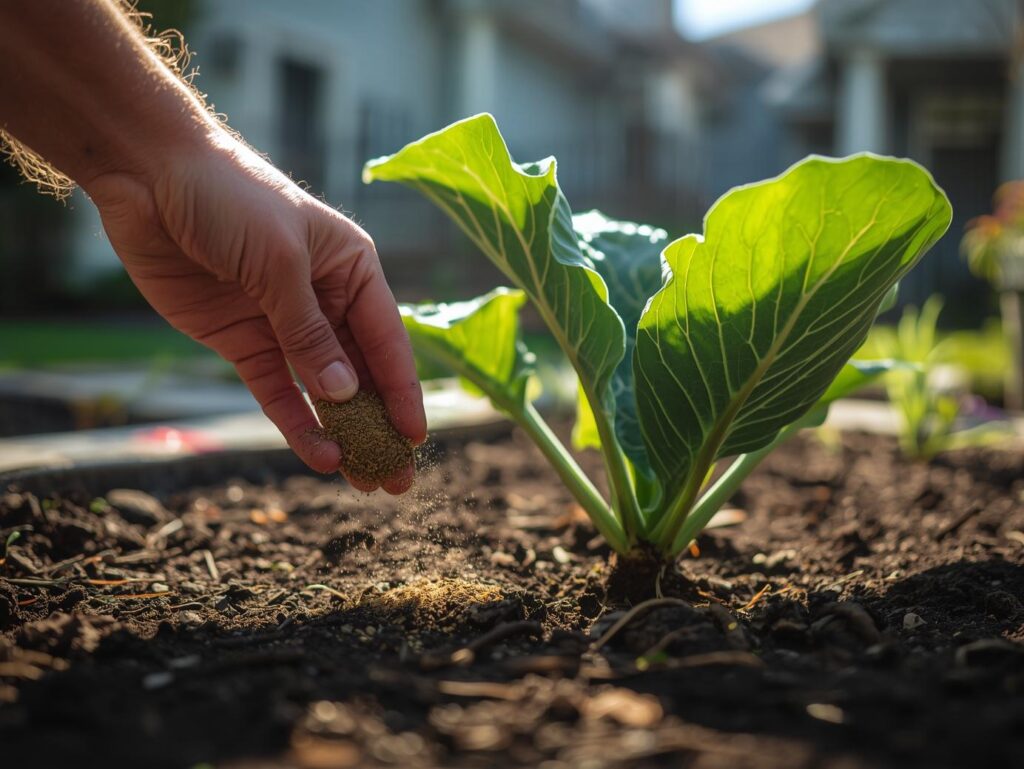
For organic gardeners, liquid seaweed extract, compost tea, or fish emulsion can provide gentle, sustained feeding. As the cabbage begins to form heads, switch to a fertilizer with higher potassium and phosphorus to support dense, compact growth. Maintaining a steady feeding schedule helps the plant develop strong roots, healthy leaves, and a firm, well-formed head ready for harvest.
Pruning and Training
Pruning cabbage plants is not as common as with other vegetables, but occasional maintenance helps improve air circulation and plant health. Remove yellowing or damaged outer leaves regularly to prevent disease and pest infestations. This also allows more light and air to reach the developing head. Keep the base of the plant free from debris to discourage insects and maintain cleanliness in your courtyard garden.
For gardeners growing cabbage in containers or raised beds, managing plant size and spacing is crucial. Trimming excess outer leaves that block light from reaching nearby plants can help all cabbages grow evenly. While cabbage does not require trellising or training, ensuring that plants grow upright and have proper support in loose soil prevents them from leaning or toppling as the heads mature.
Pest and Disease Control
Cabbage plants are vulnerable to common pests like aphids, cabbage worms, and flea beetles. Regular inspection of the undersides of leaves helps detect these pests early before they cause significant damage. Handpicking or using natural pest control methods such as neem oil or insecticidal soap can effectively manage infestations. Encouraging beneficial insects like ladybugs can also help keep pest populations under control in your courtyard garden.
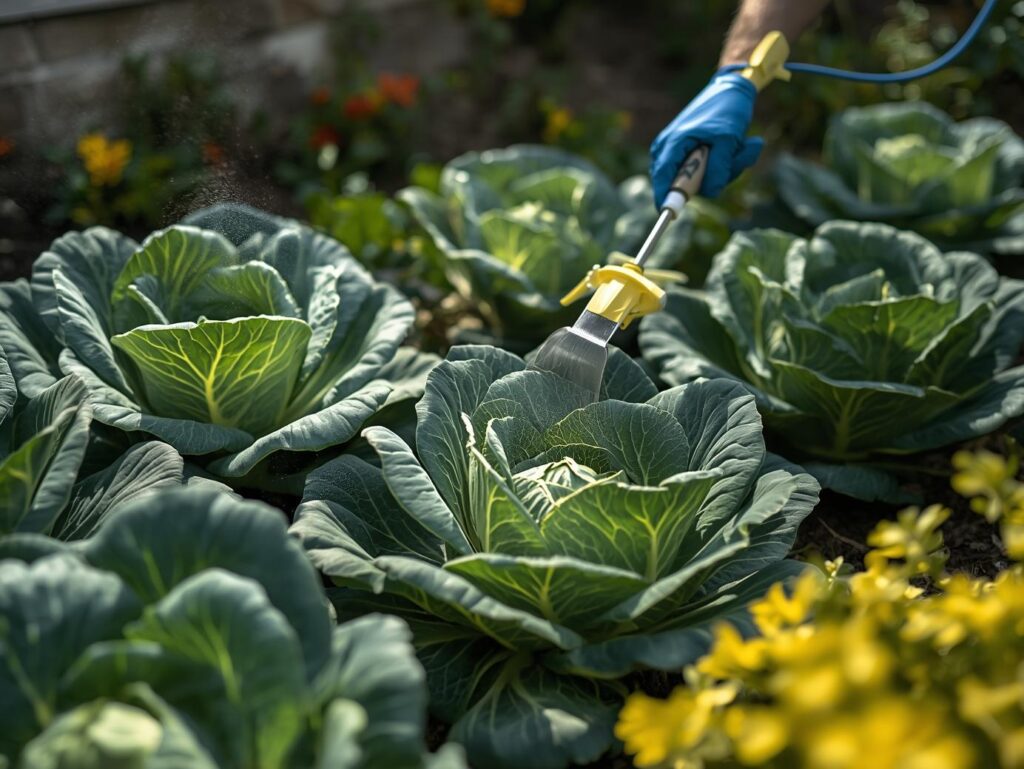
Diseases such as black rot, clubroot, and downy mildew can affect cabbage if the soil remains overly wet or poorly drained. Crop rotation, proper spacing, and maintaining clean soil are effective preventive measures. Avoid planting cabbage or related crops in the same spot every year to reduce disease buildup. Healthy soil and good hygiene practices ensure strong plants that are more resistant to both pests and diseases.
Fruiting and Harvest
Cabbage does not produce fruit but instead develops a large, compact head that is ready for harvest when it feels firm to the touch. Depending on the variety and growing conditions, cabbage typically matures within 70 to 100 days after planting. Harvest the heads by cutting them at the base with a sharp knife, leaving a few outer leaves to protect the inner layers.
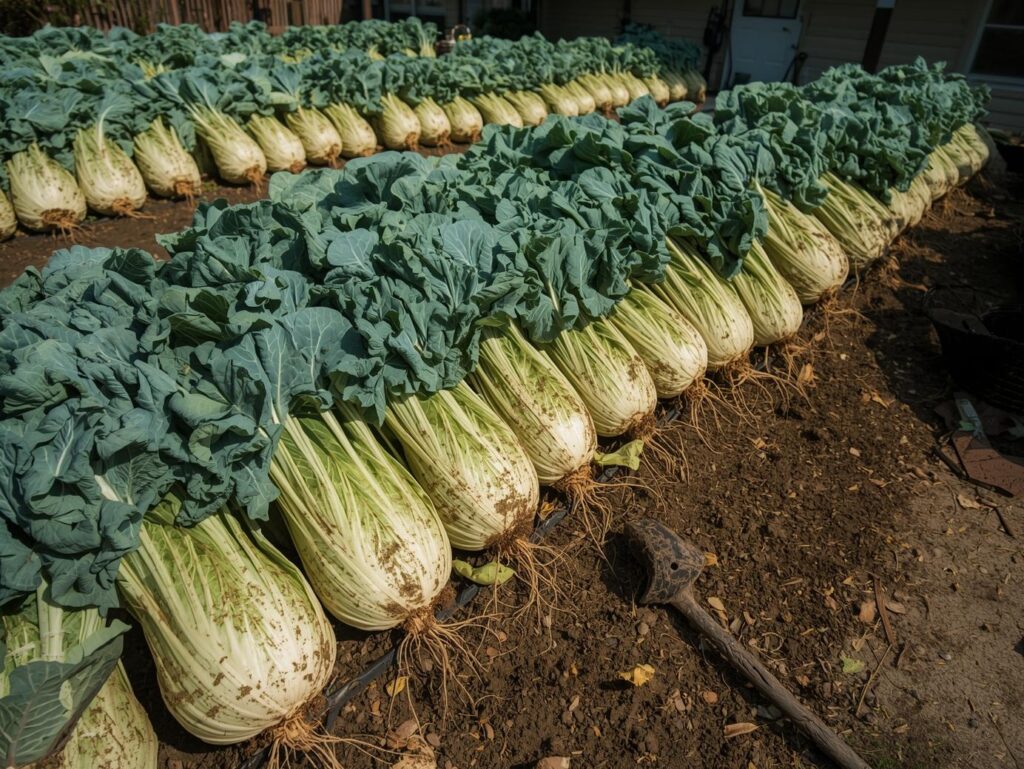
After harvesting the main head, smaller side heads may develop on the remaining stem, especially in some cabbage varieties. These can be allowed to mature for an extended harvest. To store fresh cabbage, keep it in a cool, humid environment or refrigerate it to maintain crispness. Courtyard gardeners in the USA can enjoy multiple harvests per season with proper timing and care, making cabbage a valuable addition to any home garden.
